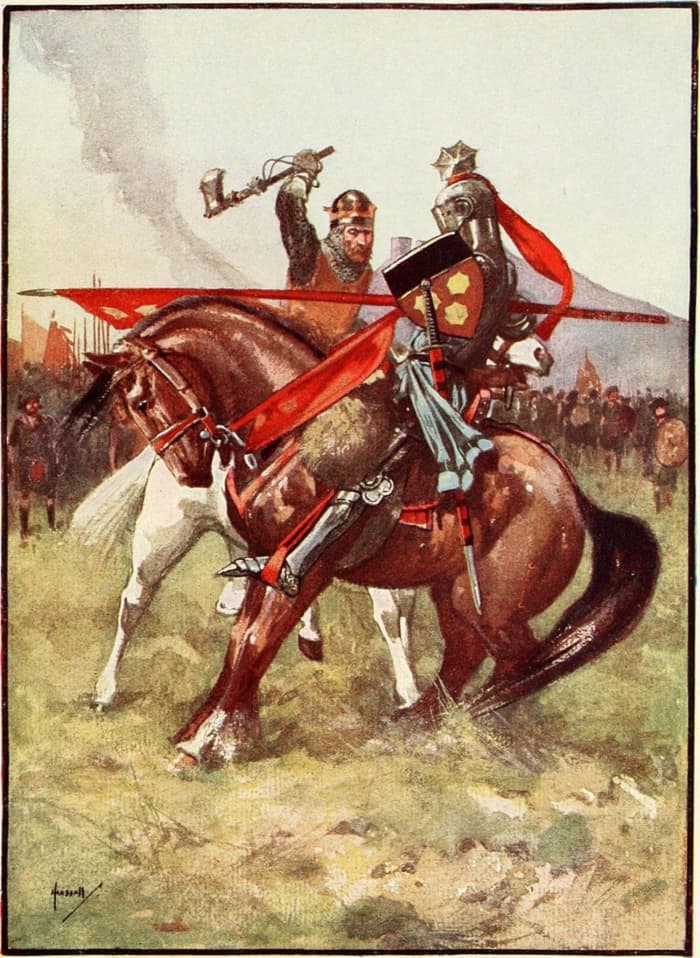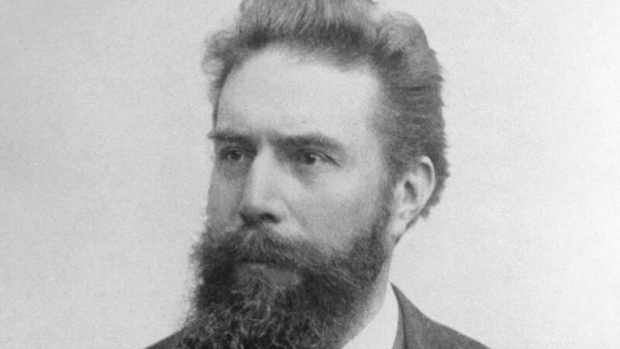Scottish Hero Robert the Bruce: Victor of the Battle of Bannockburn
Robert the Bruce, Brus or Bruis
Scottish national hero Robert the Bruce, Robert I, King of Scots, was a contemporary of "Braveheart" William Wallace. Robert led his armies to battle glory, and he won independence from the oppressive English.
Kings Edward I, II and III of England were unequal to Robert the Bruce's passion, military prowess and inspirational power over the Scottish people.
Robert the Bruce, sometimes spelled Brus or Bruis, was born on 11th July 1274 at Turnberry Castle, Ayrshire, Scotland. (The castle is a ruin today, surrounded by one of Donald Trump's golf clubs). He was the eldest son of the Norman French immigrant Robert de Bruis, 6th Earl of Annandale, and his wife Marjorie, Countess of Carrick. Robert had nine siblings.
His family was related to the Scottish royal family through King David I from the House of Dunkeld. King Henry I of England was a paternal ancestor.
In 1295 Robert married Isabella of Mar, and on 12th December 1296, their daughter Marjorie was born; she was the mother of the first Stewart (Stuart) monarch of Scotland. Isabella died shortly after the birth, and Robert married his second wife, Irish noblewoman Elizabeth de Burgh in 1302.
Key Locations
The First War of Scottish Independence
After the death of Scotland's new child queen Margaret, Maid of Norway, in September 1290 Scotland's throne became vacant. She was the last of William the Lion's descendants. During the next two years, thirteen claimants stepped forward to fill the position of monarch. Edward I of England settled the matter, or so he optimistically believed.
The English king nominated John Balliol as Scotland's ruler. Balliol was a descendant of William the Lion's brother. Balliol agreed with his subservience to Edward I, but the Bruces' and many of the Scottish people refused to accept being a vassal state of England.
When Balliol made an alliance with France, the Auld Alliance, he succeeded in alienating Edward I, and he found himself imprisoned in the Tower of London and then exiled to France.
During the early years of the ensuing unrest now known as the First War of Scottish Independence (1296–1328), Robert, as Earl of Carrick after his mother's death in November 1292, switched allegiance. He was initially on Edward I's side but from the middle of the 1290s, he supported the legendary knight William Wallace, a supporter of Balliol. Wallace was elected Guardian of Scotland after the Battle of Stirling Bridge in 1297.
In 1298 William Wallace resigned as Guardian of Scotland, and Robert the Bruce shared joint guardianship with John Balliol's nephew Sir John Comyn III of Badenoch. It was an uneasy partnership.
No man holds his own flesh and blood in hatred and I am no exception. I must join my own people and the nation in which I was born. I ask that you please come with me and you will be my councillors and close comrades.
— Robert the Bruce addressing a crowd in Annandale (from English Chronicler Walter of Guisborough)
Robert the Bruce and the Spider
Robert, or one of his supporters, murdered Sir John Comyn III in Greyfriar's Church, Dumfries on 10th February 1306. For this, Robert was excommunicated by Pope Clement V, and he was declared an outlaw by England's King Edward I. Robert was proclaimed King of Scots on 25th March 1306, and two days later he and Elizabeth had their coronation at the ancient Scone Abbey.
Edward I sent his armies across the border, and early in his reign, Robert I suffered two heavy defeats to the English, and he narrowly avoided capture. He became a fugitive hiding on the remote Rathlin Island in the Irish Sea. Elizabeth, Robert's sisters, and his daughter Marjorie were taken to England and held prisoner. Robert's brothers Niall, Thomas and Alexander were executed by Edward I.
There is a legend that as Robert the Bruce sat in an island cave full of despair, he watched a spider weave its web. After six unsuccessful attempts to climb the wall without falling, the spider achieved its goal; Robert took this as a hopeful sign, and he urged himself to be patient.
Recommended
Edward I died in 1307, and his son Edward II was not as formidable a foe. Robert the Bruce stole back onto the Scottish mainland, and with brutal tactics and countless fatalities, he managed to lead the Scots to victories. The English were slowly but confidently repelled.
Victory at the Battle of Bannockburn in 1314
Edward II held little territory in Scotland when his army met with Robert the Bruce's warriors at the Battle of Bannockburn on 23rd and 24th June 1314. Despite having fewer fighting men, Robert the Bruce led the Scots to triumph.
The English were unable to hold the Scots to a siege, and the English knight Sir Henry de Bohun was slain by Robert the Bruce. Robert reportedly lamented the damage caused to his axe, the weapon that he used to crack open de Bohun's skull. Sir Alexander Seton, a Scot fighting for the English, defected to Robert the Bruce's side overnight.
After the Battle of Bannockburn Edward II guaranteed his soldiers withdrawal and an acceptance of a Scottish king who was not answerable to English rulers.
Elizabeth, Robert's queen, his captive daughter and sisters were freed. Robert and Elizabeth went on to have five children. Margaret, Matilda, David (David II, King of Scots), David's twin John died in infancy and Elizabeth. Robert the Bruce may also have fathered between three and five illegitimate children.

Robert the Bruce slaying Henry de Bohun at the Battle of Bannockburn, 23rd June 1314.
Wikipedia Public Domain
The Treaty of Edinburgh-Northampton: Scottish Independence
Robert I, King of the Scots, was recognised by Pope John XXII as the rightful ruler of Scotland in 1324.
In 1327 King Edward II was deposed and his son Edward III took the throne of England. This Edward brokered peace with Robert, and on 17th March 1328 Scotland finally won independence, in writing, when Edward and Robert signed the Treaty of Edinburgh-Northampton.
Queen Elizabeth died on 27th October 1327 after she fell from her horse. She was buried in Dunfermline Abbey. By this time, Robert was seriously ill, probably with leprosy; he died on 7th June 1329 at his manor in Cardross, Dunbartonshire.
According to his wish, his heart was finally laid to rest at Montrose Abbey in Roxburghe. The rest of the Scottish hero was buried beside Elizabeth in Dunfermline Abbey.
Today, under the Scottish Nationalist Party's leadership, many people in Scotland are again asserting their right to independence from English rule and the Westminster parliament. Fortunately, their campaign uses less bloodthirsty means than Robert's.

The tower of Dunfermline Abbey, Scotland. Robert the Bruce's burial place. "King" and "Robert" can be seen spelled out and "the" and "Bruce" are on the other sides.
Wikipedia/Kim Traynor CC3.0



